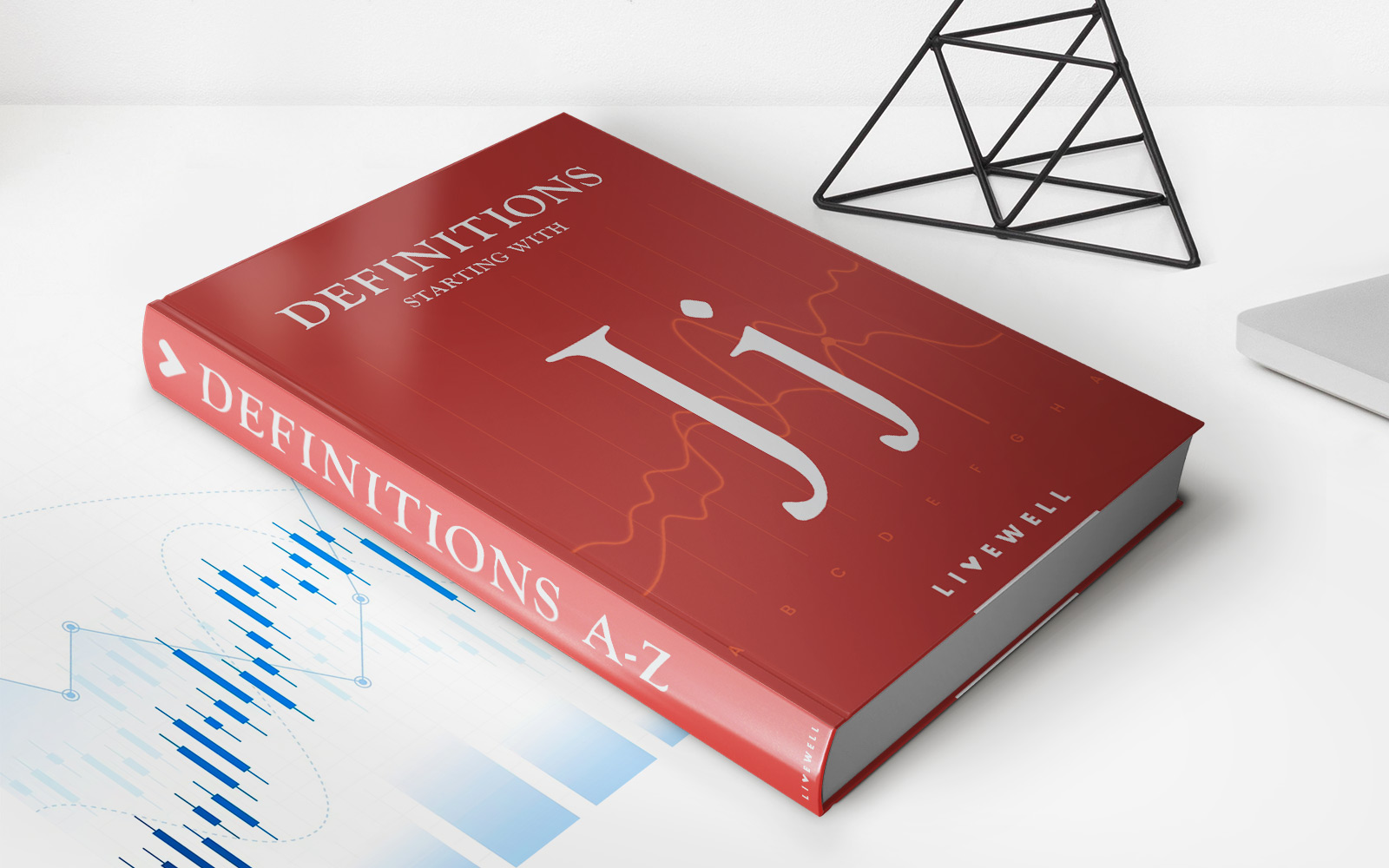

Finance
What Is A 20-Year Term Life Insurance Policy?
Modified: December 29, 2023
Learn about 20-year term life insurance policies and secure your finances for the future. Get the coverage you need at an affordable rate.
(Many of the links in this article redirect to a specific reviewed product. Your purchase of these products through affiliate links helps to generate commission for LiveWell, at no extra cost. Learn more)
Table of Contents
- Introduction:
- What is term life insurance?
- Understanding a 20-year term life insurance policy
- Benefits of a 20-year term life insurance policy
- Drawbacks of a 20-year term life insurance policy
- Who should consider a 20-year term life insurance policy?
- How to choose the right 20-year term life insurance policy?
- Comparing premiums and coverage options
- Common misconceptions about 20-year term life insurance policies
- Frequently asked questions about 20-year term life insurance policies
- Conclusion
Introduction:
Welcome to the world of term life insurance, where you can protect your loved ones and secure their financial future. Among the various term options available, a 20-year term life insurance policy stands as a popular choice for many individuals. In this article, we will explore what a 20-year term life insurance policy entails, its benefits, drawbacks, and who should consider opting for this particular term length.
Life insurance acts as a safety net for your family in the event of your untimely demise. It provides a financial cushion that can assist your loved ones with their living expenses, debts, education, and other financial obligations. Term life insurance is a type of policy that offers coverage for a specific period, typically ranging from 10 to 30 years.
A 20-year term life insurance policy, as the name suggests, provides coverage for a period of 20 years. During this time, if the insured passes away, the policy will pay out a death benefit to the designated beneficiaries. This lump sum payment can be used to replace lost income, pay off outstanding debts, cover funeral expenses, or serve as an inheritance.
One of the key advantages of a 20-year term life insurance policy is that it offers coverage for a significant period, providing peace of mind to individuals during crucial stages of their lives. Whether it’s paying off a mortgage, raising a family, or planning for retirement, a 20-year term policy ensures your loved ones are financially protected throughout these milestones.
However, it’s essential to weigh the benefits against the drawbacks and consider your specific circumstances before determining if a 20-year term life insurance policy aligns with your needs. Let’s delve deeper into these factors to gain a comprehensive understanding of this type of coverage.
What is term life insurance?
Term life insurance is a type of life insurance policy that provides coverage for a specified period, known as the term. Unlike permanent life insurance policies, such as whole life or universal life insurance, term life insurance does not have a cash value component and only pays out a death benefit if the insured passes away during the term.
The primary purpose of term life insurance is to offer financial protection to your loved ones in the event of your death, ensuring that they are not burdened with the financial consequences of your passing. The death benefit provided by a term life insurance policy can be used to cover various expenses, including funeral costs, outstanding debts, daily living expenses, and even future financial goals, such as funding a child’s education or paying off a mortgage.
Term life insurance policies offer flexibility in terms of choosing the length of coverage. Common term lengths include 10, 15, 20, 25, or 30 years, although some insurers may offer more customized options. The premium for a term life insurance policy is generally fixed for the duration of the term, allowing policyholders to plan their budgets accordingly.
One of the key advantages of term life insurance is its affordability compared to permanent life insurance policies. Since term life insurance provides coverage for a specific period and does not accumulate cash value, the premiums tend to be lower, making it an attractive option for individuals who need coverage for a specific timeframe.
It’s important to note that term life insurance policies do not build any cash value over time, which means that if the policyholder survives the term, no payout or benefits will be received. However, they do offer the option to renew the policy or convert it into a permanent life insurance policy, depending on the terms and conditions of the insurance provider.
In summary, term life insurance is a straightforward and cost-effective way to provide financial protection to your loved ones for a specified period. It offers peace of mind knowing that your family will be taken care of financially if the unexpected should occur during the term. However, it’s essential to assess your specific needs and consider factors such as the length of coverage, premium affordability, and your future financial goals before choosing a term life insurance policy.
Understanding a 20-year term life insurance policy
A 20-year term life insurance policy is a specific type of term life insurance that provides coverage for a period of 20 years. This means that if the insured passes away during the 20-year term, the policy will pay out a death benefit to the designated beneficiaries. Understanding the key features and components of a 20-year term life insurance policy is essential for making an informed decision.
Firstly, it’s important to consider the coverage amount or death benefit that you require. The death benefit is the amount that will be paid out to your beneficiaries in the event of your death. When deciding on the coverage amount, it’s crucial to consider factors such as outstanding debts, income replacement needs, future financial goals, and any other financial obligations you may have. It’s generally recommended to choose a coverage amount that is at least 5-10 times your annual income.
Next, you will need to select the term length for your policy, which in this case is 20 years. The term length should align with your specific financial goals, such as paying off a mortgage, ensuring financial stability for your children, or reaching retirement age. It’s important to think about where you and your loved ones will be in 20 years and what financial responsibilities you may still have at that time.
Another aspect to consider is the premium payment structure. With a 20-year term life insurance policy, the premiums are usually fixed for the entire duration of the term. This means that the premium amount you pay at the start of the policy will remain the same throughout the 20-year period. This can provide stability and predictability in terms of budgeting and planning for your insurance expenses.
Additionally, it’s important to understand the renewal options available with a 20-year term life insurance policy. At the end of the initial 20-year term, some insurance providers may offer the option to renew the policy for another term, often with adjusted premium rates based on your age and health status at that time. It’s important to consider whether renewability is a priority for you when selecting a 20-year term policy.
Lastly, it’s crucial to be aware of any exclusions or limitations specified in the policy. Term life insurance policies typically have a contestability period, usually within the first two years, during which the insurer may investigate any claims and potentially deny them if misrepresentations or non-disclosures are discovered. It’s important to provide accurate information during the application process to avoid any complications or issues with your policy.
By understanding the key components of a 20-year term life insurance policy, including coverage amount, term length, premium payment structure, renewal options, and policy exclusions, you can make an informed decision that aligns with your financial goals and priorities.
Benefits of a 20-year term life insurance policy
Opting for a 20-year term life insurance policy offers a range of benefits that make it an attractive choice for many individuals. Here are the key advantages of choosing a 20-year term policy:
- Long-term coverage: A 20-year term life insurance policy provides coverage for a substantial period, offering peace of mind knowing that your loved ones are financially protected throughout significant milestones in your life. Whether you’re paying off a mortgage, raising children, or planning for retirement, this policy duration allows your beneficiaries to maintain their standard of living and meet financial obligations.
- Affordability: Term life insurance policies are generally more affordable compared to permanent life insurance options. With a 20-year term, the premiums are fixed for the duration of the policy, making it easier to budget and plan your insurance expenses. This affordability allows you to allocate your financial resources towards other priorities, such as savings and investments.
- Customizable coverage: A 20-year term life insurance policy offers flexibility in choosing the coverage amount that suits your specific needs. You can determine the death benefit based on outstanding debts, income replacement requirements, and future financial goals. This ensures that your loved ones have the necessary financial resources to maintain their lifestyle and fulfill future aspirations.
- Option to convert: Many 20-year term life insurance policies come with a conversion option that allows you to convert the policy into a permanent life insurance policy at the end of the term. This can be beneficial if you desire lifelong coverage or if your needs and financial circumstances change over time. The conversion option provides flexibility and ensures that your insurance coverage aligns with your evolving needs.
- No surprise premium increases: With a 20-year term policy, your premiums remain fixed for the entire duration of the term. This means you won’t have to worry about unexpected premium increases that can potentially strain your finances. This stability allows for better financial planning and ensures that your insurance remains affordable and manageable throughout the 20-year period.
These benefits make a 20-year term life insurance policy an excellent choice for individuals who want long-term coverage, affordability, and flexibility in their insurance options. Assessing your individual needs and considering the advantages of a 20-year term policy can help you make an informed decision that provides adequate financial protection for your loved ones.
Drawbacks of a 20-year term life insurance policy
While a 20-year term life insurance policy offers several benefits, it’s important to consider the potential drawbacks before making a decision. Here are some of the key drawbacks to be aware of:
- No cash value: Unlike permanent life insurance policies, a 20-year term life insurance policy does not accumulate a cash value component. This means that if you outlive the policy term, you will not receive any return on your premiums. If you’re looking for a policy that offers a savings or investment component, a term policy may not be the ideal choice.
- Reduced coverage after the term: Once the 20-year term of the policy expires, your coverage ends unless you choose to renew the policy under new terms. If your insurance needs extend beyond the initial 20-year period, you may need to purchase a new policy at a potentially higher premium rate. This can be a concern if your health has deteriorated or if you’ve faced major life changes that could affect your insurability.
- No benefits if the policy expires: If you pass away after the policy term has ended and you haven’t renewed or converted the policy, your beneficiaries will not receive any death benefits. This can be a disadvantage if you anticipate a need for coverage later in life or if you want to leave a legacy for your loved ones.
- Potential premium increases upon renewal: If you choose to renew your 20-year term life insurance policy at the end of the initial term, the premiums may increase based on your age and health status at the time of renewal. This means that the cost of coverage could become more expensive as you get older, making it important to review the renewal options and associated premium changes.
- No benefit if you cancel the policy: If you decide to cancel your 20-year term life insurance policy before the term expires, you will not receive any return on the premiums paid. This can be a disadvantage if your financial situation changes, and you no longer require or can afford the coverage.
Considering these drawbacks will help you make an informed decision about whether a 20-year term life insurance policy is the right choice for you. It’s important to evaluate your long-term insurance needs and compare them to the potential limitations of a policy with a fixed term.
Who should consider a 20-year term life insurance policy?
A 20-year term life insurance policy is well-suited for individuals who have specific financial responsibilities and goals that align with a 20-year timeframe. Here are some situations where a 20-year term policy may be a suitable choice:
- Young families: If you’re a young parent with dependents, a 20-year term life insurance policy can provide coverage during the crucial years of raising children. It ensures that your family is financially protected in the event of your untimely passing and can cover expenses such as childcare, education, and daily living costs.
- Homeowners with a mortgage: For individuals who have taken out a mortgage, a 20-year term policy can align with the timeframe of their mortgage repayment. It ensures that if the policyholder passes away, the death benefit can be used to pay off the remaining mortgage balance, allowing the remaining family members to retain the property without the burden of mortgage payments.
- Debt repayment: If you have outstanding debts, such as student loans or credit card debt, a 20-year term life insurance policy can provide financial protection to ensure that your loved ones are not burdened with those liabilities in the event of your death. The death benefit can help your beneficiaries pay off those debts, providing them with a fresh financial start.
- Business owners: If you are a business owner with partners or loans tied to the business, a 20-year term life insurance policy can offer protection in case of your untimely demise. The death benefit can be used to buy out your ownership stake or settle outstanding debts, ensuring the smooth continuation of the business without financial strain.
- Long-term financial goals: If you have specific long-term financial goals, such as funding your child’s education or saving for retirement, a 20-year term policy can align with those objectives. The policy provides coverage during the critical years when these goals are being pursued, allowing your loved ones to continue working towards those aspirations even if you’re no longer there.
It’s important to evaluate your individual circumstances and financial responsibilities to determine if a 20-year term life insurance policy is the right fit for you. Consider factors such as your age, health, outstanding debts, financial goals, and the needs of your dependents to make an informed decision about the coverage amount and term length you require.
Remember, consulting with a licensed insurance professional can help you assess your specific needs and guide you towards the most suitable life insurance policy for your situation.
How to choose the right 20-year term life insurance policy?
Choosing the right 20-year term life insurance policy requires careful consideration of several factors. Here are some key steps to help you make an informed decision:
- Assess your coverage needs: Determine the amount of coverage you require by evaluating your financial responsibilities, such as outstanding debts, income replacement needs, and future financial goals. This will help you determine the appropriate death benefit for your 20-year term policy.
- Compare insurance providers: Research and compare different insurance providers to find reputable companies with good customer reviews and competitive rates. Look for insurers with a strong financial stability rating to ensure that they can fulfill their obligations in the future.
- Evaluate policy features: Examine the various features and options offered by different insurers. Consider factors such as conversion options, riders (additional coverage add-ons), and any policy restrictions or exclusions. Assessing these features will help you find a policy that aligns with your specific needs and preferences.
- Get multiple quotes: Obtain quotes from several insurance providers to compare premium rates. Be sure to provide accurate and consistent information to get an accurate comparison. Consider the affordability of the premiums in relation to your budget while keeping in mind the importance of sufficient coverage.
- Review the insurer’s underwriting process: Understand the underwriting process of the insurance providers you are considering. Each company has its own underwriting guidelines, and some may be more lenient or have more flexible options for applicants with certain health conditions. Evaluate how the insurer’s underwriting policies may affect your eligibility and premiums.
- Consult with an insurance professional: Seek guidance from a licensed insurance professional who can analyze your specific needs and provide personalized recommendations. They can help you navigate the complexities of insurance policies, explain the fine print, and answer any questions you may have.
- Review the policy terms and conditions: Carefully read and understand the terms and conditions of the 20-year term life insurance policy you are considering. Pay attention to details such as premium payment schedules, renewal options, conversion options, and any exclusions or limitations that may apply.
- Consider the insurer’s reputation and customer service: Research the insurer’s reputation for customer service and claim settlement. Look for feedback from policyholders to get a sense of how the insurer treats its customers during the claims process. A reliable and responsive insurer can provide peace of mind when you need it most.
By following these steps, you can make an informed decision when selecting the right 20-year term life insurance policy. Remember, it’s essential to regularly review your insurance coverage as your circumstances change to ensure that your policy remains adequate and aligned with your evolving needs.
Comparing premiums and coverage options
When choosing a 20-year term life insurance policy, comparing premiums and coverage options is crucial to finding the right policy for your needs. Here are some factors to consider when comparing different policies:
- Premium rates: Compare the premium rates offered by different insurers for the coverage amount and term length you desire. Keep in mind that the premiums for a 20-year term policy are typically fixed for the duration of the term. Consider the affordability of the premiums and ensure that they fit within your budget.
- Coverage amount: Evaluate the coverage amounts available from different insurers. Consider your financial obligations, such as outstanding debts, income replacement needs, and future financial goals, to determine the appropriate coverage amount for you. Select a policy that provides sufficient coverage to meet these needs.
- Underwriting process: Understand the underwriting process of each insurer. Some insurers may have more lenient underwriting guidelines, making it easier to get coverage, particularly if you have certain health conditions or lifestyle factors. Be aware that different underwriting processes can impact your eligibility and premiums.
- Policy features and riders: Evaluate the additional features and riders offered by different insurers. These may include accelerated death benefits, disability income riders, or a guaranteed insurability option. Consider which features are important to you and compare their availability and cost across different policies.
- Conversion options: If you anticipate the potential need for permanent coverage in the future, check whether the 20-year term policy allows for conversion to a permanent policy. Evaluate the terms and conditions, such as conversion deadlines and any associated costs, to determine the flexibility and suitability of the conversion option.
- Financial stability and reputation: Research the financial stability and reputation of the insurance companies you’re considering. Look for insurers with strong financial ratings from reputable rating agencies. Additionally, consider their reputation for customer service and claims settlement. A financially stable and reputable insurer provides peace of mind knowing that they can fulfill their obligations.
When comparing premiums and coverage options, it’s important to balance affordability with adequate coverage. Consider your budget, long-term financial goals, and the needs of your beneficiaries to select a policy that provides the right balance of cost and coverage for you.
Consulting with an insurance professional is also recommended, as they can help analyze your specific needs, provide personalized recommendations, and help you understand the nuances of different policy options. They can guide you through the process of comparing premiums and coverage options, ensuring that you find the right 20-year term life insurance policy for your circumstances.
Common misconceptions about 20-year term life insurance policies
There are several misconceptions surrounding 20-year term life insurance policies that can lead to confusion or misinformation. It’s important to dispel these misconceptions to fully understand the benefits and limitations of this type of policy. Here are some common misconceptions:
- “I can only get coverage for 20 years”: One common misconception is that a 20-year term life insurance policy is the only option available, and coverage cannot be extended beyond that period. In reality, there are term options ranging from 10 to 30 years, and some insurance providers may offer custom term lengths to suit individual needs.
- “I won’t need life insurance after 20 years”: Another misconception is that life insurance is only necessary for a specific period and becomes unnecessary after 20 years. However, financial obligations, such as mortgage payments or providing for dependents, can extend beyond 20 years. It’s essential to evaluate your long-term needs and consider the possibility of renewing or converting the policy if coverage is still required.
- “Term life insurance is a waste of money if I outlive the policy”: Some individuals believe that if they outlive their 20-year term life insurance policy, they will have wasted their money on premiums. While it is true that there is no cash value accumulation with a term policy, the purpose of life insurance is to provide financial protection to beneficiaries in the event of the insured’s death. If you have fulfilled that purpose by reaching the end of the term and not needing a payout, it can be seen as a positive outcome.
- “I can’t convert my policy to permanent coverage”: Many people believe that once their 20-year term life insurance policy ends, they cannot convert it into a permanent policy. However, most insurers offer conversion options that allow policyholders to convert to a permanent policy, typically without undergoing another medical examination. This can be valuable if your insurance needs change or if you want lifelong coverage.
- “Term life insurance is too expensive”: There is a misconception that term life insurance is always expensive. However, term policies are generally more affordable compared to permanent policies since they only provide coverage for a specified period. Premium rates can vary based on factors such as age, gender, health, and coverage amount. By comparing quotes from different insurers, you can find a policy that fits your budget.
It’s crucial to approach 20-year term life insurance policies with accurate information and a clear understanding of their features. By dispelling these misconceptions, you can make a well-informed decision that aligns with your needs and provides the necessary financial protection for you and your loved ones.
Frequently asked questions about 20-year term life insurance policies
When considering a 20-year term life insurance policy, individuals often have questions about the coverage, benefits, and the overall process. Here are answers to some frequently asked questions:
- What is the main advantage of a 20-year term life insurance policy?
- Can I renew a 20-year term life insurance policy?
- Can I convert a 20-year term policy into a permanent policy?
- Will the premiums increase during the 20-year term?
- How do I determine the coverage amount?
- Is a medical exam required for a 20-year term life insurance policy?
- What happens if I outlive the 20-year term?
- Can I add riders to a 20-year term policy?
A 20-year term policy offers coverage for a significant period, providing peace of mind during crucial stages of life. It can help protect your loved ones financially, especially when paying off a mortgage, raising a family, or planning for retirement.
Some insurers allow policyholders to renew a 20-year term policy at the end of the initial term. However, premiums for the renewed policy may be adjusted based on your age and health condition at that time.
Most insurance providers offer a conversion option that allows policyholders to convert their 20-year term policy into a permanent life insurance policy. This can be a valuable option if you want lifelong coverage or if your needs change in the future.
No, the premiums for a 20-year term policy are typically fixed for the entire duration of the term. This allows for better budgeting and predictable insurance expenses.
The coverage amount should be based on your financial obligations such as outstanding debts, income replacement needs, and future financial goals. It is generally recommended to choose a coverage amount that is at least 5-10 times your annual income.
Most insurers require a medical exam for a 20-year term policy, especially for larger coverage amounts. The exam helps insurers assess your health condition and determine the appropriate premium rates. However, some insurers offer no-medical-exam policies, which may have certain limitations and higher premiums.
If you outlive the 20-year term and have not renewed or converted the policy, there will be no death benefit paid out. The policy will simply expire, and you will not receive any return on the premiums paid.
Yes, many insurers offer additional riders that can be added to a 20-year term life insurance policy. These riders provide extra coverage, such as accelerated death benefits, disability income benefits, or critical illness coverage. The availability and cost of riders may vary among different insurance providers.
It’s important to consult with a licensed insurance professional to receive personalized answers to your specific questions regarding 20-year term life insurance policies. They can guide you through the process, address any concerns, and help you determine the best policy for your individual needs.
Conclusion
Choosing a life insurance policy is an important decision that requires careful consideration of your financial needs and goals. A 20-year term life insurance policy offers a valuable solution for individuals who require coverage during specific stages of their lives. It provides a fixed period of financial protection for your loved ones, offering peace of mind and security.
Throughout this article, we’ve explored what a 20-year term life insurance policy entails, its benefits, drawbacks, and who should consider this term length. We’ve addressed common misconceptions and provided answers to frequently asked questions to help you make an informed decision.
Remember, a 20-year term policy provides long-term coverage, affordability, and flexibility. It is well-suited for individuals with young families, outstanding debts, mortgage obligations, and those with specific financial goals within a 20-year timeframe.
To choose the right 20-year term life insurance policy, carefully assess your coverage needs, compare different insurers, evaluate premiums and coverage options, and consider the features and riders that align with your specific requirements. Consulting with an insurance professional can provide valuable insights and guidance throughout this process.
Ultimately, the goal of a 20-year term life insurance policy is to provide financial protection and support to your loved ones in the event of your passing. By selecting a policy that suits your individual circumstances and future goals, you can ensure that your family’s financial well-being is safeguarded during crucial stages of life.
Remember, life insurance is an essential component of a comprehensive financial plan, and by securing the right policy, you can gain peace of mind knowing that your loved ones will be financially protected, even when you’re no longer here.














